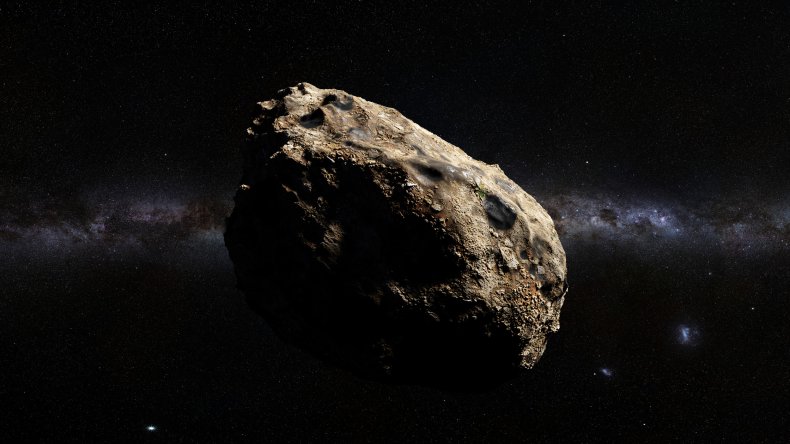Asteroid Twice As Big As Empire State Building to Fly Past Earth Next Week
An asteroid that could be up to two times as wide as the height of the Empire State Building is going to fly past Earth next week—but our planet will be spared a collision.
The asteroid, known as 1999 RM45, is going to pass within just 1.8 million miles of Earth at around 7:52pm UTC on Tuesday March 2, according to NASA's Center for Near Earth Studies (CNEOS).
On an astronomical scale, this distance is tiny. In astronomical units (au)—a measure of distance astronomers use for mapping celestial objects—it is just under 0.02. The Sun is roughly 1 au away.
In other words, the space rock will be passing at around seven-and-a-half times the average distance between the Earth and the Moon.
NASA said the asteroid is between 350 and 780 meters in diameter. Even at the lower end of this estimate, 1999 RM45 will be almost as tall as the Eiffel Tower in Paris, France.
When the space rock passes by the Earth, scientists think it will be travelling at around 44,700 miles per hour—about 50 times faster than a handgun bullet.
Due to close passes such as this, and others predicted in the future, NASA has classified 1999 RM45 as "potentially hazardous."
The close pass is estimated to be the nearest the asteroid will come to the Earth for decades to come. 1999 RM45 is not predicted to strike the Earth for the foreseeable future or at least until the year 2200, the limit at which NASA stops making data available.
The space rock is classified as a member of the Apollo asteroid group. An Apollo classification means that, at some point in its orbit, the asteroid will cross the path of Earth's own orbit.
It's important for NASA to track such asteroids, as evidenced by the Chelyabinsk meteor exploding over Russia in 2013, injuring more than 1,600 people.
That asteroid was only the size of a house—much smaller than 1999 RM45—but still its collision with the Earth released roughly the same amount of energy as 440,000 tons of TNT and smashed windows more than 200 square miles away, according to NASA. Broken glass was thought to have been the main cause of associated injuries.
Lindley Johnson, NASA's planetary defense officer, called the event "a cosmic wake-up call".
As of Monday 22 February this year, NASA had discovered around 25,000 near-earth asteroids, and just under 1,000 of these are thought to be around 1km, or 0.6 miles, in size.


